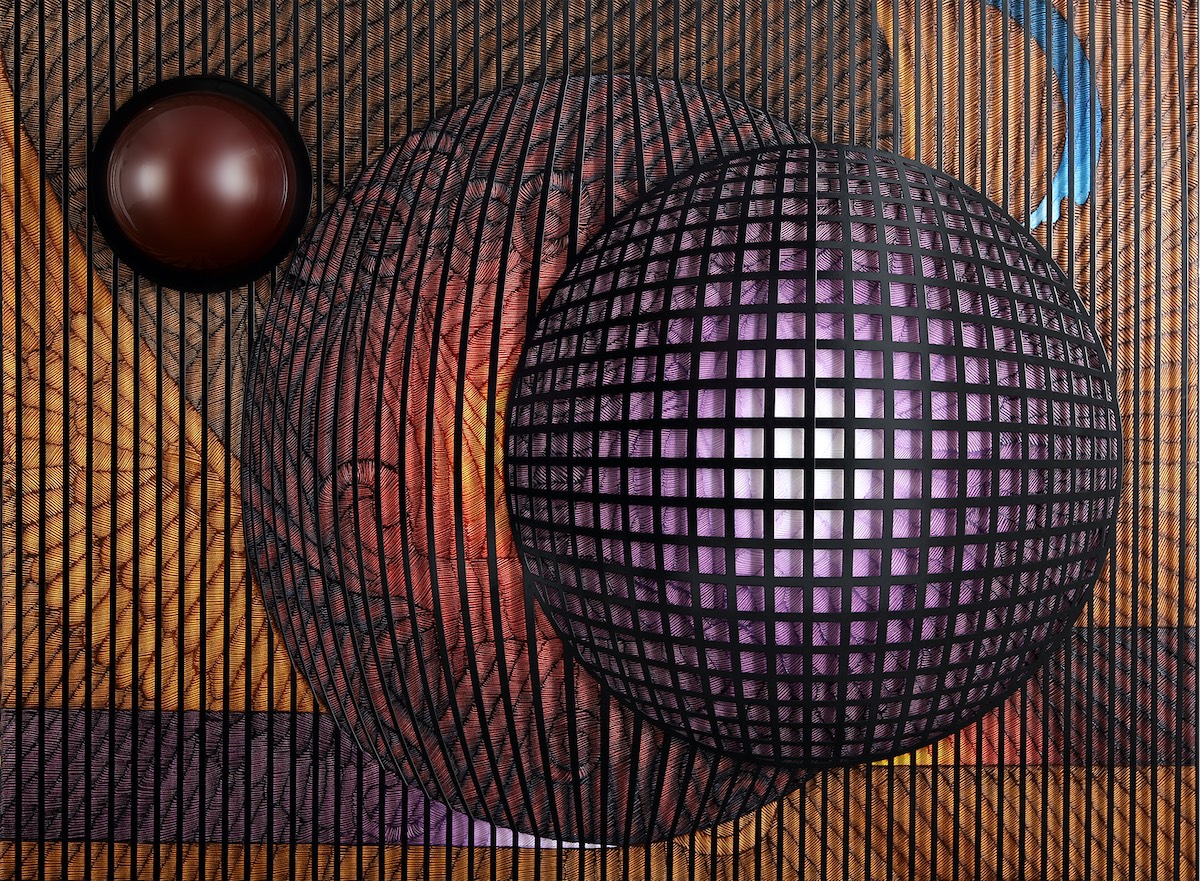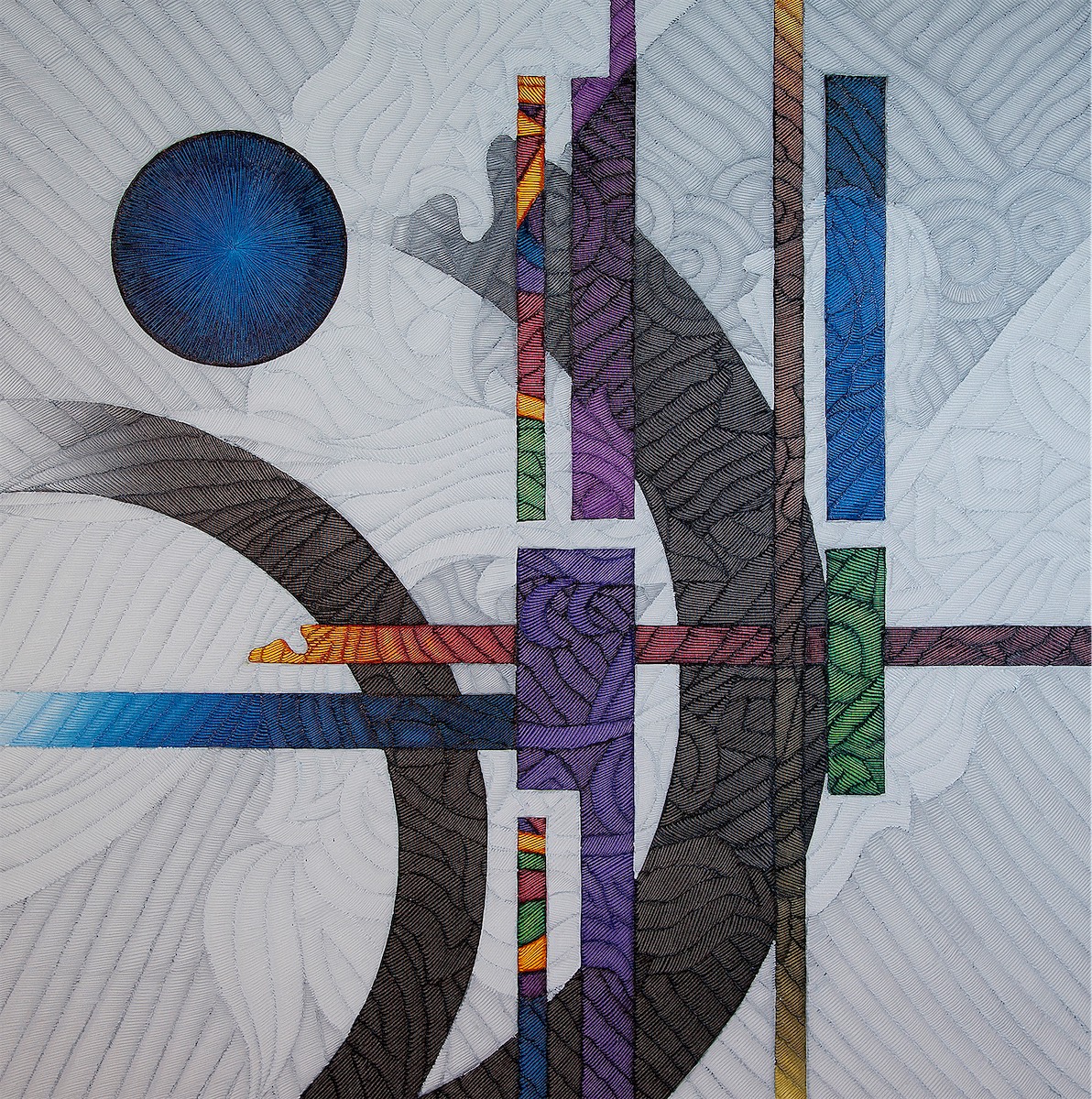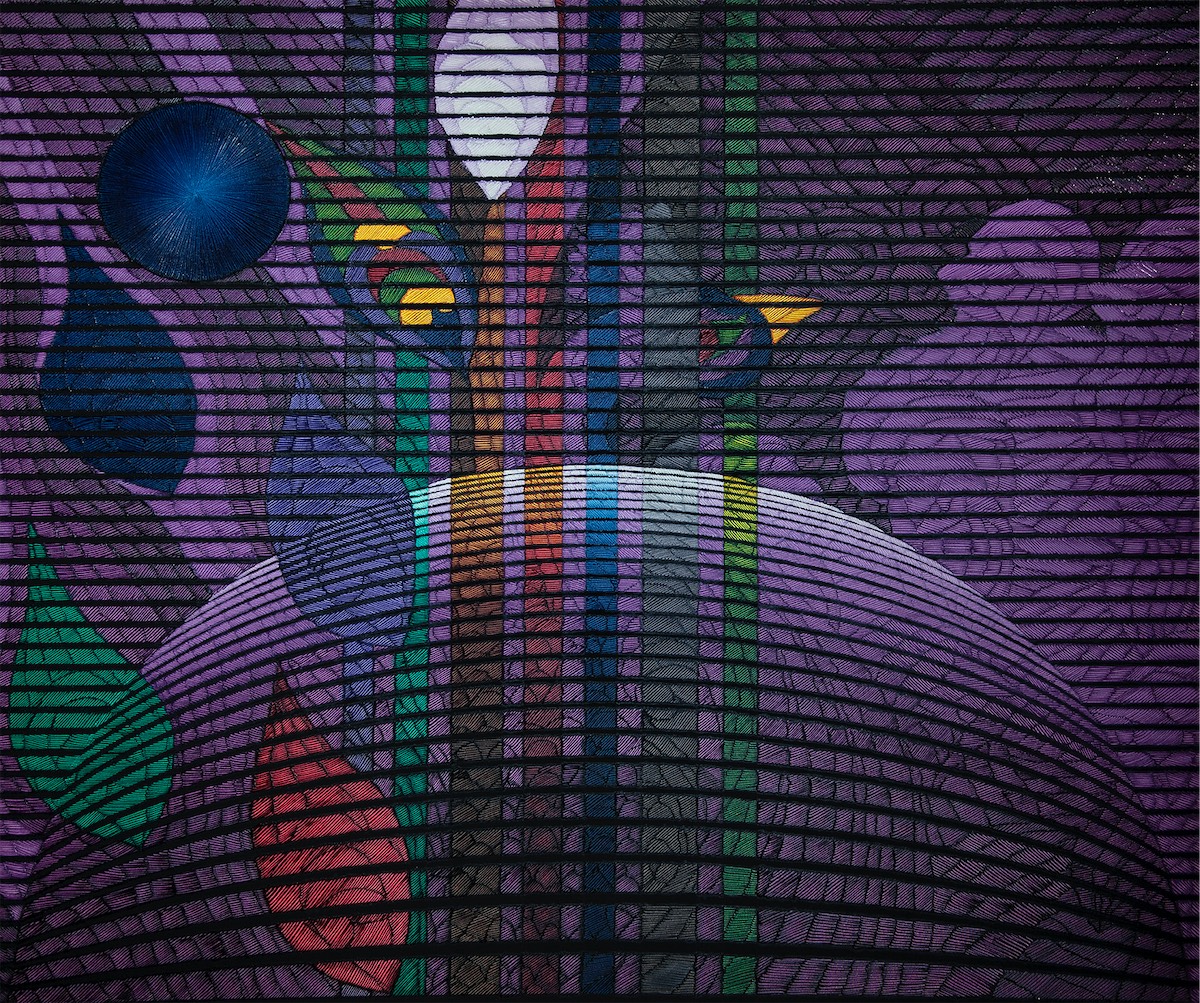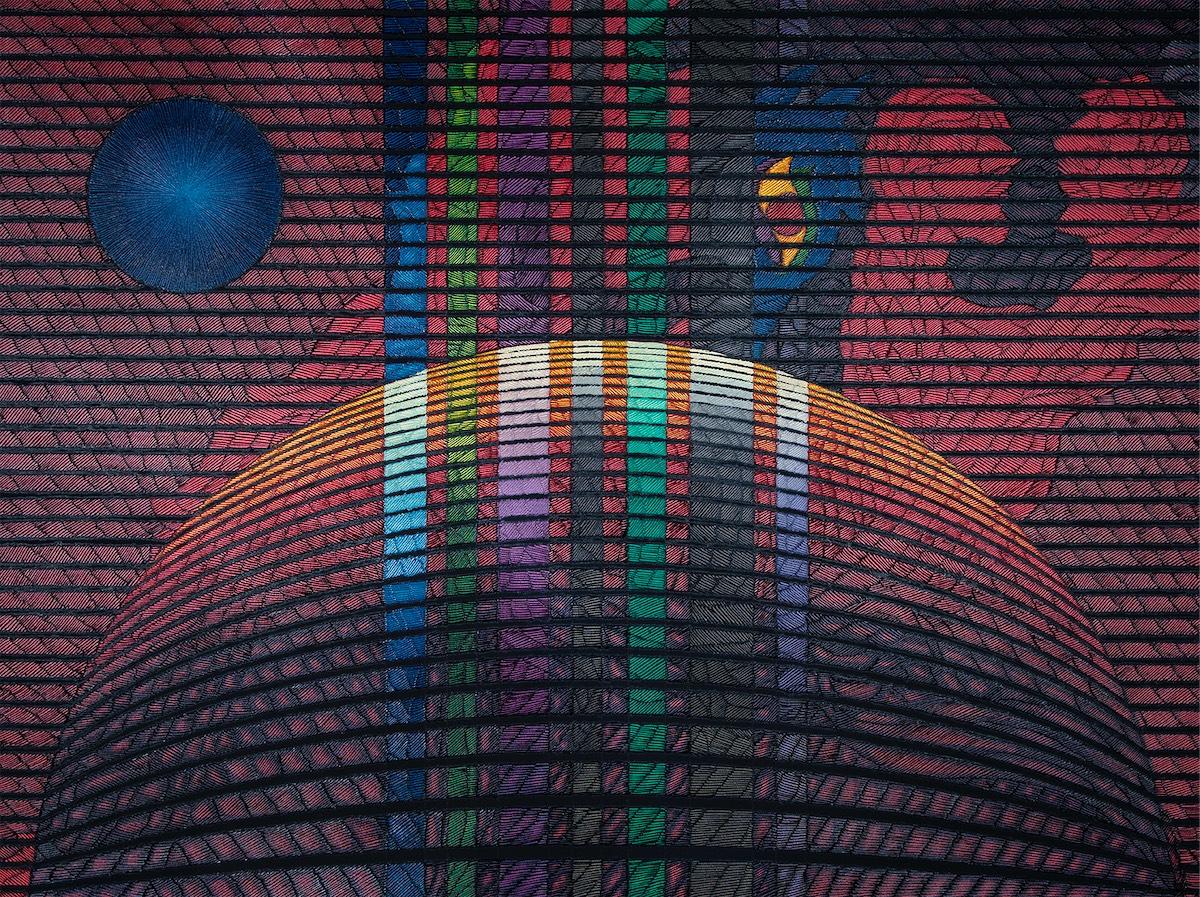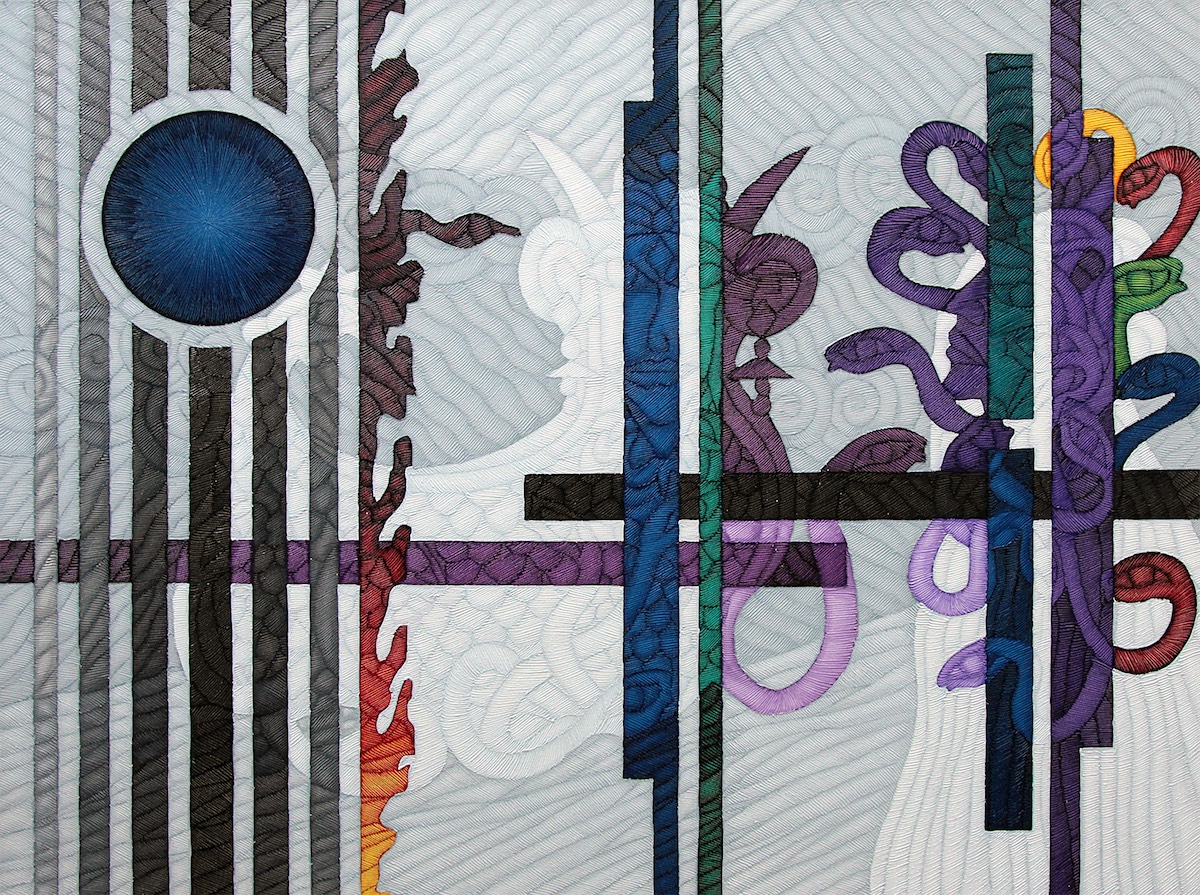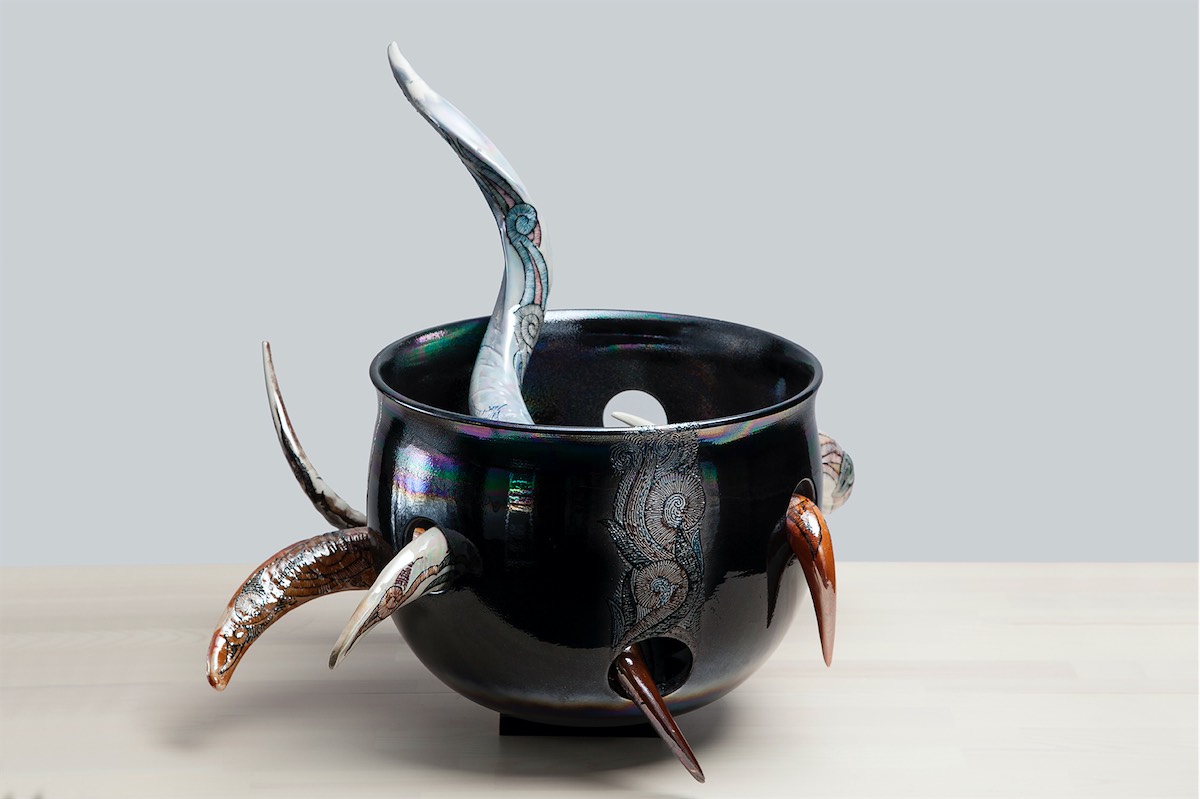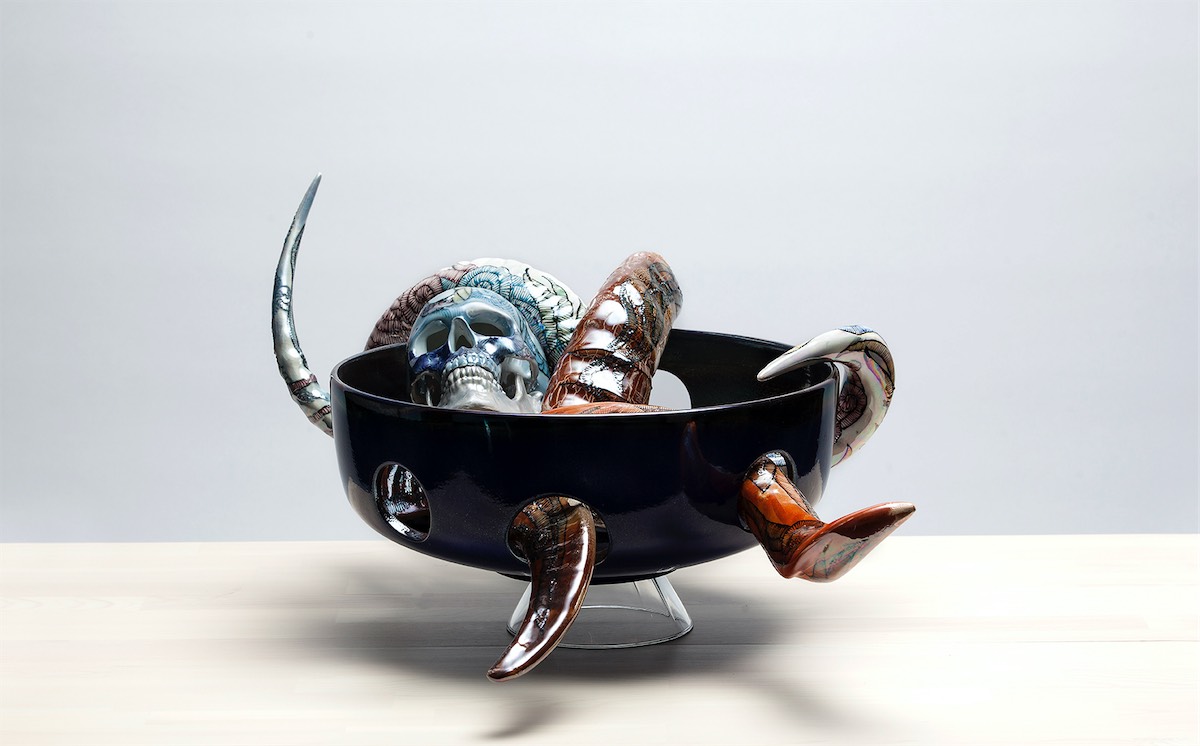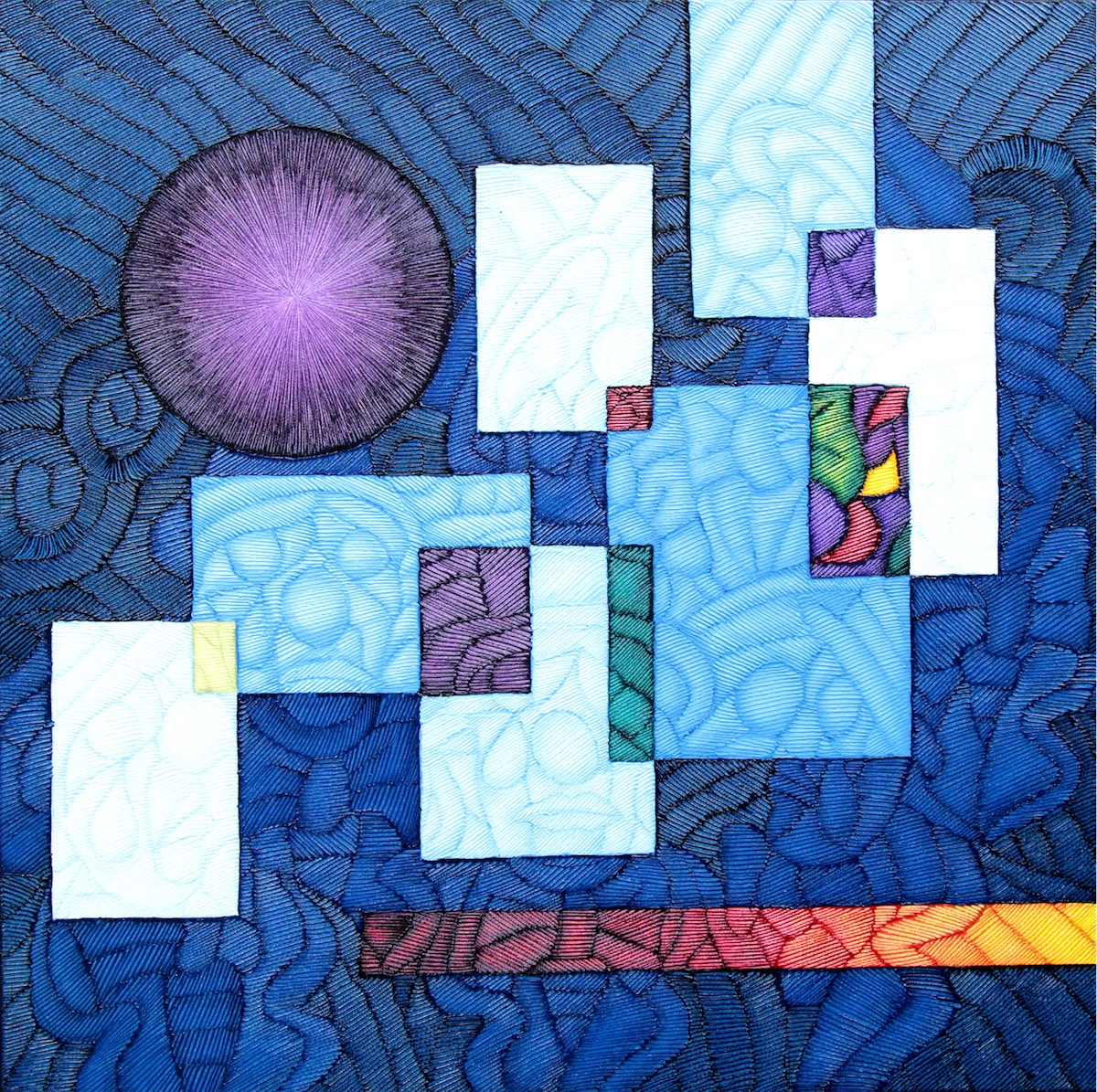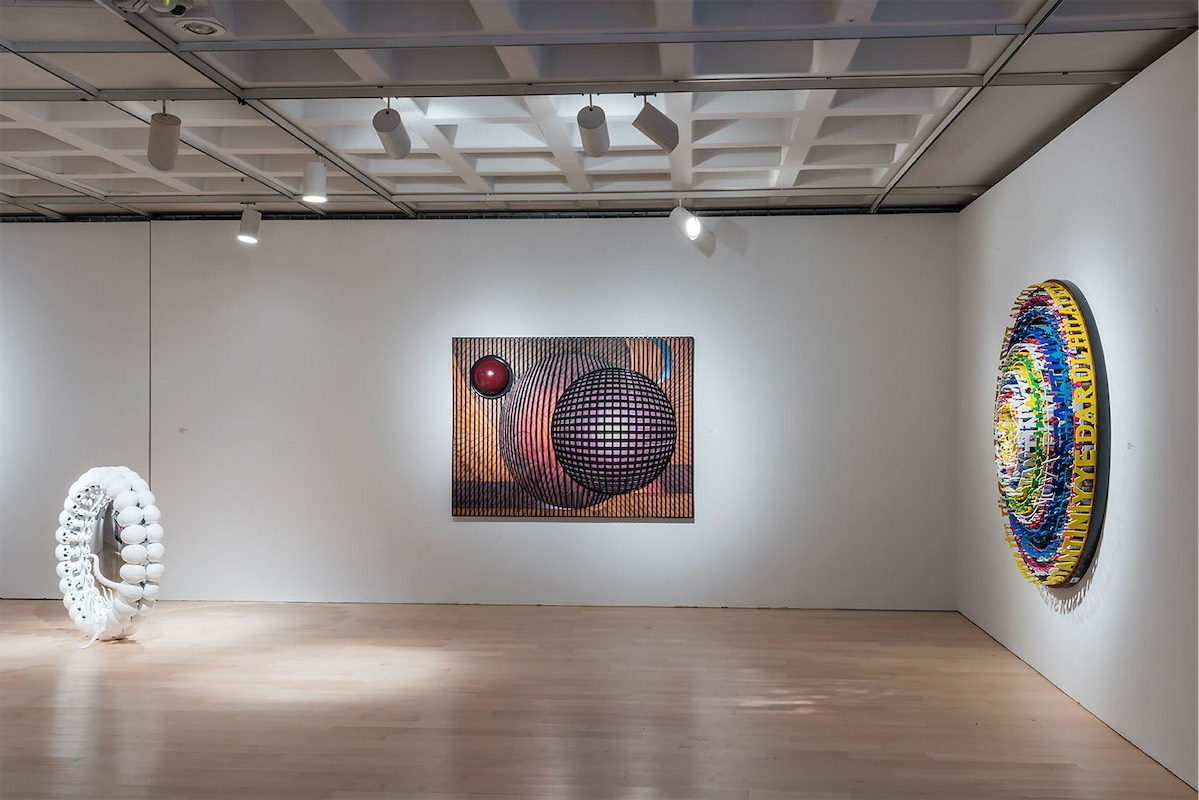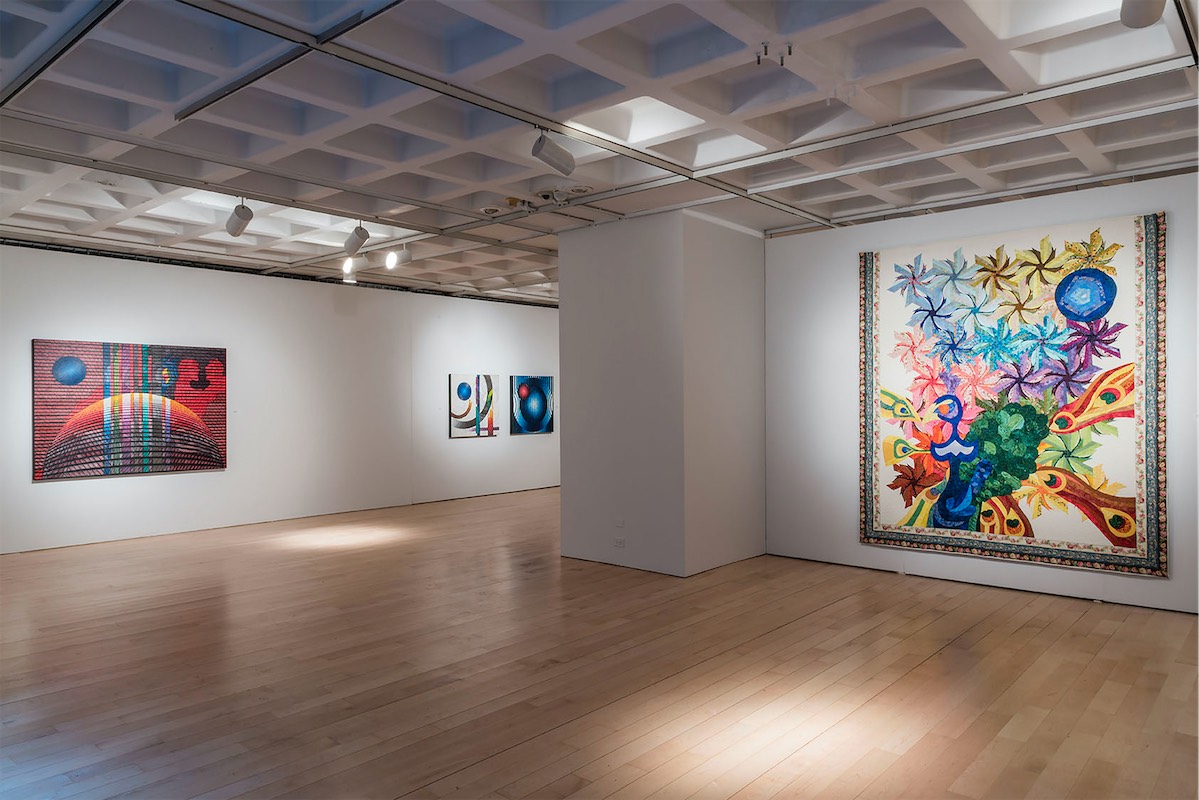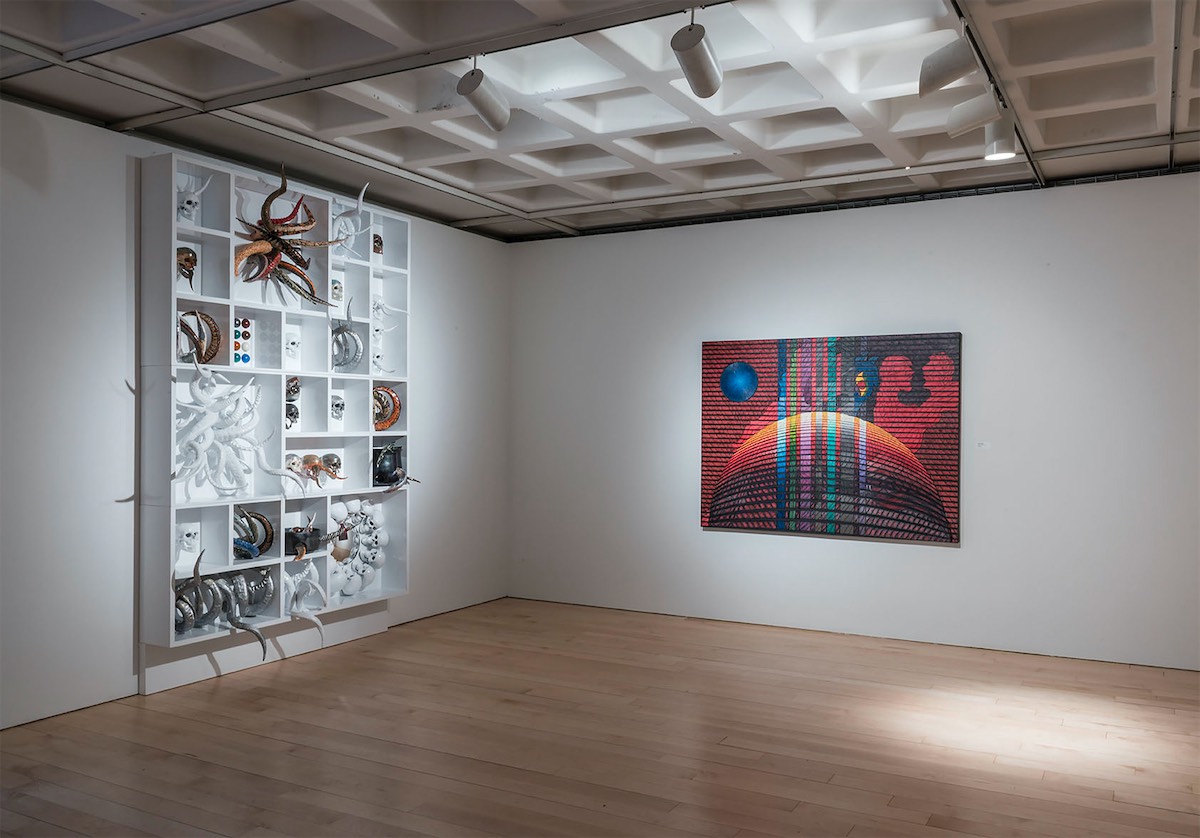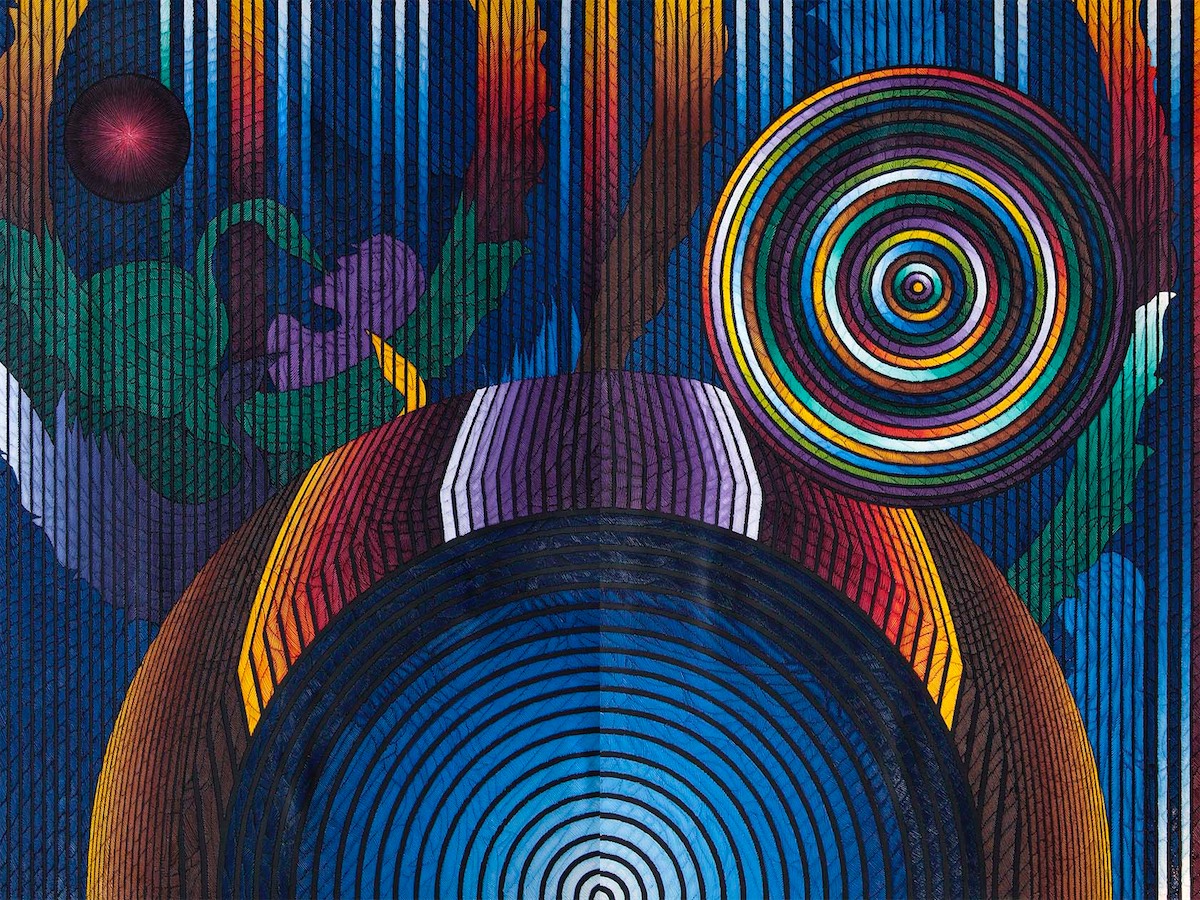11 January – 4 February 2017
Journey from East to West
Marlborough Gallery, New York
Curated by Matthew Drutt
In Journey from East to West, a kind of mini retrospective is in play, showing off Güneştekin’s talent in a selection of mediums, from paintings, reliefs, carpets, kilims, and patchworks, to his most recent forays in sculpture. The artist has been working on a breakout series of sculptures in ceramic and metal works showing the stylistic transformation his work has undergone in a while. The series carries the general title Dhul Qarnayn, referred to as “he of the two horns” in the Quran. He has rendered the idea of Dhul Qarnayn in a series of grotesquely beautiful ceramic urns containing ornate skulls and horns that radiate from and through the walls as if he is a Medusa figure.
In his optic paintings, the objects incorporate a metal screen into the imagery, adding another dimensionality blurring the line between painting and sculpture. They are circular, and the orb is at the centre and rendered in a metallic mirror. These works change depending on where installed since they reflect their surroundings. But it also inscribes the viewer into them as they, too, are reflected when looking at the object head-on. Seen from the front, they appeared to be rigidly abstract stripe paintings, always with an orb embedded at the upper left symbolizing the Sun. Their rigidity breaks down into a chaotic sea of forms leaping out into space when viewed from the side. The patchworks which reflect the themes that occupy in his paintings differ radically from the traditional ones. The artist’s patchworks are wildly colourful, whereas traditional patchworks are modest. They look like stained glass from a distance, given their luminosity. As the curator puts it, they construct an abstract garden of forms.
Fotoğraflar Naz Güler




